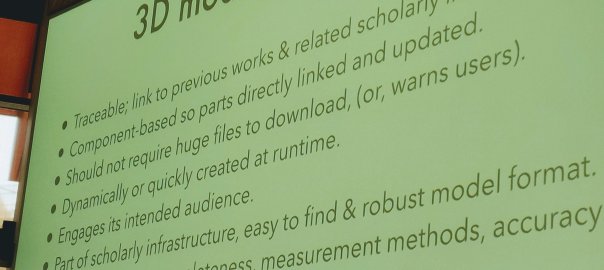What have I been doing this year? Playing a lot of piano, badly. But also (and I hope to add 2 journal articles and a book project and a serious game design project to this mix):
Invitations:
- Invited CI, ARC LIEF Grant LE210100021. $440,000. “Australian Cultural Data Engine for Research, Industry and Government.” Joining as a Chief Investigator, 26 April 2021. Led by Prof Rachel Fensham, Melbourne.
- Invited CI, Australian Research Data Commons (ARDC) platforms grant: Time-Layered Cultural Map of Australia 2.0 $100,000. 25/11/2020. https://ardc.edu.au/news/new-data-projects-will-help-transform-australian-research/
- Invited reviewer, Springer-Nature.
- Invited onto the European Science Foundation College of Expert Reviewers.
- Invited to speak to New South Wales Local Studies Librarians group, “Virtual heritage: tools, projects, hopes and challenges,” Zoom, 23 March 2021.
- Invited guest lecturer and tutor, Data Science Visualisation, Science & Engineering, Curtin University.
- Invited to Professor of Design interview panel, SUSTech, China, by Dean Thomas Kvan.
- Invited advisor for Swedish-Finnish grant application: PLATYPUS Engaging diverse publics through participatory play in heritage institutions, led by Uppsala University.
- Opening speaker, invited, webinar on smart tourism. ASEAN Australia Smart Cities Webinar Series Part 7: Promoting Smart Tourism Recovery via Virtual Reality. ZOOM webinar 2 March 2021. Organiser: Asian Development Bank.
- Invited to speak at University of Aberdeen Academic Forum and New South Wales Local Studies Librarians group-Zoom (date?).
- Interviewed for Canvas8 magazine. Quine, O. (2021). Are Britons ready for virtual holidays? canvas8. Retrieved from https://www.canvas8.com/content/2021/03/23/britons-virtual-holidays.html
- Interviewed by UNSW students on the subject of virtual tourism.
- Invited to co-chair the EuroMed2020 conference www.euromed2020.eu, Springer-Nature LNCS. Co-chairs include Professor Marinos Ioannides, ERA and UNESCO of Chair Digital Cultural Heritage, Mrs Eleanor Fink, USA, former Getty Digital Techs Director and inventor of Object-ID standard, Professor Lorenzo Cantoni from Switzerland, UNESCO Chair in ICT.
2021 PUBLICATIONS
Conference Proceedings (as Book):
- Ioannides, M., Fink, E., Cantoni, L., & Champion, E. (Eds.) (2021). Digital Heritage. Progress in Cultural Heritage: Documentation, Preservation, and Protection. 8th International Conference, EuroMed 2020, Virtual Event, November 2–5, 2020, Revised Selected Papers. DOI:10.1007/978-3-030-73043-7. ISBN 978-3-030-73043-7.
Published articles
- Rahaman, H., Johnston, M., & Champion, E. (2021). Audio-augmented arboreality: wildflowers and language. Digital Creativity, 1-16. https://doi.org/10.1080/14626268.2020.186853
- Champion, E. (2020). Culturally Significant Presence in Single-player Computer Games. Journal on Computing and Cultural Heritage, 13(4). DOI: 10.1145/3414831. https://dl.acm.org/doi/10.1145/3414831
- NB AWARD: in 2021 this paper won Virtual Archaeology Review Journal’s 2020 Paper of the Year. “Survey of 3D digital heritage repositories and platforms”, by Erik Champion and Hafizur Rahaman. DOI: https://doi.org/10.4995/var.2020.13226
Published Fully Referred Conference Papers
- Champion, E., Kerr, R., McMeekin, D., & Rahaman, H. (2020, 2-5 November 2020). Time-Layered Gamic Interaction with a Virtual Museum Template. Paper presented at the EuroMed 2020 Conference, Online/Cyprus. Revised Selected Papers. Springer-Nature. Published in 2021.
2021 Conference and Journal Reviewer
- Invited committee member, Australian Museums & Galleries Association (AMaGA) National Conference (Perth).
- Invited onto Program Board of Culture & Computing 2021 Conference, Springer ( HCI International).
- Invited reviewer, Springer-Nature Scientific Reports.
- Invited reviewer, the Journal of Open Archaeology (De Gruyter).
- Invited reviewer, CAA2021.
2021-22 PUBLICATIONS IN PRESS
Books in press
- Champion, E. (2021: November). Rethinking Virtual Places. Indiana University Press, Spatial Humanities series.
- Champion, E. (Ed). (2021: May). Virtual Heritage: A Guide. Ubiquity Press, London.
- Champion, E. (Ed). (2022: pending). Screen Tourism and Affective Landscapes.
- Champion, E., & Hiriart, J. (Eds.). (2022: in press). Assassin’s Creed in the Classroom, Museum, and Gallery: De Gruyter: Video games and the Humanities series, 18 chapters, 25 international authors.
Book Chapters in press
- Champion, E., Nurmikko-Fuller, T., & Grant, K. (2022: invited). Chapter 12 Alchemy and Archives, Swords, Spells, and Castles: Medieval-modding Skyrim. In R. Houghton (Ed.), Games for Teaching, Impact, and Research UK: De Gruyter.
- Champion, E., & Hiriart, J. (2022). Workshopping Board Games for Space Place and Culture. In M. Lasansky & C. Randl (Eds.), Playing Place: Board Games, Architecture, Space, and Heritage. Cambridge, Massachusetts, USA: MIT Press.
- Champion, E. (2022). Reflective Experiences with Immersive Heritage: A Theoretical Design-Based Framework. In A. Benardou & A. M. Droumpouki (Eds.), Difficult Pasts and Immersive Experiences. London, UK: Routledge.
- Champion, E. (2022). Not Quite Virtual: Techné between Text and World. In B. Mauer & A. Salter (Eds.), Reimagining the Humanities. Anderson, South Carolina, USA: Parlor Press.
- Champion, E. (2021: pending). Biodiversity and Cultural Diversity: Virtual opportunities. In E. Wandl-Vogt (Ed.),Biodiversity in connection with Linguistic and Cultural Diversity. Vienna, Austria.
- Champion, E. (2021: pending). Workshopping Game Prototypes for History and Heritage. In Digital Humanities book, Politecnico di Torino, Italy. Aracne Publishing Company. Chapter.
Conference activities to take place
- Wright, H., et al., 2021. S12: Digital Infrastructures and New (and Evolving) Technologies in Archaeology (Roundtable). CAA2021: Digital Crossroads. Cyprus/Online. https://2021.caaconference.org/sessions/ 14-18 June.


